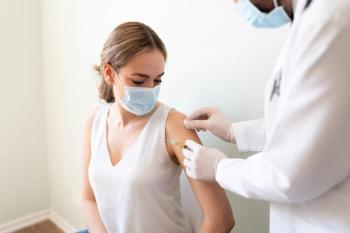
Why obstetrics and gynecology is seeing an increase in applicants


Why obstetrics and gynecology is seeing an increase in applicants

In a recent presentation at at the Nurse Practitioners in Women’s Health (NPWH) 25th Annual Conference, Carri Holton, MSN, WHNP, discussed gynecological complications that adolescents may face and offered practical treatment options.

An improved electronic health record tracking and reminder system improves patient follow-up after abnormal Pap results and increases compliance with ASCCP guidelines, according to a poster presentation at the Nurse Practitioners in Women’s Health (NPWH) 25th Annual Conference in Houston, Texas from September 28 to October 2022.

Among pregnant women coinfected with HIV, a higher hepatitis C viral load increased the likelihood of transmitting HCV to children.

Although the proportion of women treated with biologics continues to grow, data on treatment recommendations among both physicians and female patients of childbearing age remain limited.

In a recent study, participants who had received a COVID-19 vaccine saw an average increase in menstrual cycle length of less than 1 day.

An analysis of data from more than 100,000 individuals living in Europe is providing insight into the risk of cardiovascular disease associated with consumption of artificial sweeteners.

Although hospitalizations due to urinary tract infections have increased, there are some investigational antibiotics in clinical trials. Here is a review of some of these therapies in the pipeline.

An analysis of data from a pair of landmark diabetes studies is providing insight into the differences in prognostic value of cardiometabolic risk factors for predicting incident cardiovascular disease events among men and women with type 1 diabetes.

"Our goal is to understand the lived experiences of people on gender-affirming hormonal therapy, as it relates to their urinary and sexual health,” said first author Paige De Rosa, MD, urology resident at the University of Iowa, Iowa City.

Despite a painful history, equitable care is imperative

Consider the needs of marginalized patients to promote equity

Correct terms and education can help normalize the conversation for patients.

Teenaged girls at average risk don’t need Papanicolaou tests, but some special populations do.

A cocktail of different probiotic species may be more effective than probiotic monotherapies, according to a recent literature review.

Period poverty isn’t just an issue in third-world countries or among low-income women. Across the United States, women of all ages still struggle to afford menstrual products.

Understanding signs, symptoms helps determine the best treatment regimen

The US Food & Drug Administration (FDA) sent a response letter to Spero Therapeutics regarding its New Drug Application (NDA) for tebipenem pivoxil hydrobromide (tebipenem HBr) to treat complicated UTIs, saying the application lacks sufficient data.

A 54-year-old transgender woman presented at Cleveland Clinic with vaginal stenosis. She was seeking surgical revision after complications from gender affirmation surgeries performed at other care centers failed to establish a functional neovagina.

Zinc plays a pivotal role in the body to prevent infection and maintain epidermal balance. At the 2022 American Urogynecologic Society and International Urogynecological Association’s 47th Annual Meeting, a poster presentation showed that using a zinc-containing vaginal gel may decrease the reoccurrence of vaginal infections in women.

During the poster session of the 2022 American Urogynecologic Society and International Urogynecological Association’s 47th Annual Meeting, 2 researchers shared their study insights, which honed in on key risk factors for urinary tract injuries during major surgery.

Two physicians, one from the United States, one from Brazil, extol the virtues of being a member of AUGS and IUGA, and how there is no time like the present when it comes to medicine.

During a poster session of the 2022 American Urogynecologic Society and International Urogynecological Association’s 47th Annual Meeting, researchers shared a study that investigated baseline knowledge of patients with pelvic floor therapy.

The use of dynamic MRI for pelvic organ prolapse is essential for properly counseling patients and interpreting radiographic findings.

During the poster session of the AUGS and IUGA 2022 Scientific Meeting, investigators showed how pelvic floor physical therapy (PFPT) can help pregnant women who suffer from obstetric anal sphincter injury (OASI).